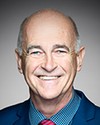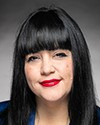That's a large question. Let me confine my remarks to what happened with these scientific recommendations.
They were written down, so to speak. The significance of the remarks was obscured by titling them, by prefacing them, with the suggestion they were unpublished and somehow less than the dire warning that Kristi Miller was trying to convey up the chain of command. It's not even clear that this information was placed before the minister before she made her decision, based on the paper record that we see.
Certainly, there's nothing in the record of decision that appeared in the proceedings of the court—to which I'm a party, which is why I know about it—that would suggest that she had the information before making the decision. This has really important ramifications in practice. The companies are in court right now, trying to get an injunction to reverse this decision and allow them to stock the farms in the Discovery Islands, and the judge hearing that case will have no evidence before him of the dire impacts to Fraser River sockeye that could ensue should he decide to restock those farms. It's simply missing from the record, and that is indefensible.
What needs to happen in order to prevent this from happening again is that DFO's mandate to promote the industry must be removed from that department. They cannot both promote aquaculture and adequately protect wild salmon. They can certainly regulate aquaculture. They have the knowledge to do that, but they cannot promote it and reconcile that promotion with the protection of wild salmon. It's been clear that that has not happened in the past, and there's no indication it can happen going forward.




